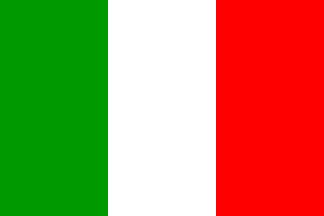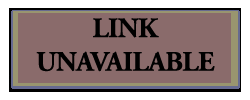|
|
The Italian part of the project
Maria Elena Giusti
There are two areas of research selected by the Italian group: the City of Capannori in the province of Lucca (Tuscany) and the City of Bagnacavallo in the province of (Emilia Romagna). The town of Bagnacavallo, situated in the province of Ravenna (Region Emilia-Romagna, north eastern Italy), includes a number of hamlets. It is located 12 m above sea level. It consists of a plain area and used to have quite extensive marshland until most of the land was completely drained at the beginning of the 20th century. Considerable changes were made in the land structure at that point and after centuries of a marsh-based economy the area has now become a dynamic centre with both agricultural activities and small and medium scale industries.The district of Capannori, in the province of Lucca (Tuscany, situated in the north-western central Italy), comprises a fairly vast area of plains but it also has a vast extension of hills and a mountain appendix. In the last century many people abandoned the villages and traditional agricultural activities in search for work elsewhere. However, nowadays, agriculture, which has become completely mechanised, remains a key activity, almost exclusively for the cultivation of oil. Both areas comprise several villages. The first area, Bagnacavallo, includes seven hamlets and villages: Boncellino, Glorie, Masiera, Prati, Rosetta, Traversara and Villanova. The population of the whole area is 16,000 inhabitants. The second area, Capannori comprises 40 villages: Badia di Cantignano, Camigliano, Carraia, Castelvecchio di Compito, Colle di Compito, Colognora di Compito, Coselli, Gragnano, Guamo, Lammari, Lappato,Lunata, Marlia, Massa Macinaia, Matraia, Paganico, Parezzana, Petrognano, Pieve di Compito, Pieve San Paolo, Ruota, Sant’Andrea di Compito, Sant’Andrea in Caprile, San Colombano, San Gennaro, San Ginese di Compito, San Giusto di Compito, San Leonardo in Treponzio, Santa Margherita, San Martino in Colle, San Pietro a Marcigliano, Segromigno in Monte, Segromigno in Piano, Tassignano, Tofori, Toringo, Valgiano, Berciano, Vorno, Capannoni Centro and a total population of 18,000 inhabitants.The choice of the two areas is justified by the fact that they are both located in the central northern part of the peninsula (one on the Adriatic and the other on the Tyrrhenian); by the fact that they still have a portion of marshland, much more extensive in the area of Bagnacavallo, by inclusion of the presence of craftsmanship on the territory aimed at the construction of basketwork, a field of research that the Italian group has paid special attention to. In the past the two areas shared an agricultural vocation that subsequently left space for industries and services. Furthermore, as the interest of the Italian group has been mainly aimed at the traditional heritage and products, with specific attention to woven products, the two areas have been joined by the presence on the territory of the Bagnacaallo ethnographic Musuem) and three ethnographic collections that will soon be put in a museum (Capannori).
They are all products that, up until at least 50 years ago, supplied a booming market thanks to the widespread presence of small artisan workshops that represented an important part of the economies mainly related to agricultural activities. In just half a century, the activities were subsequently reduced following economic changes and variations to the agricultural techniques. For the area of Bagnacavallo (Site 1), the adoption of a growing level of mechanisation on an agricultural level; for the area of Capannoni (Site 2) the gradual abandonment of agriculture resulted in the reduction of the market of woven products. The almost complete termination of these activities resulted in the preservation of knowledge and techniques in the older groups of the population; we are currently not faced with total disappearance but limitation in the fields of competence. The RUBIA project has been introduced into this framework, for the two situations, for the part related to museum integration. We have two different situations that require two different forms of intervention.
Site 1: Bagnacavallo
Here we have a museum structure of a semi-public nature, meaning that the Museum was born from the “bottom”, that is to say thanks to the initiative of some private individuals (and this is a common situation in Italy for the majority of small museum realities of an ethnographic nature) and on a voluntary basis. Various institutions and the museum itself (now maintaining its original nature as a private structure) have acknowledged this reality throughout the years and have expanded thanks to loans granted by Local and Regional Administrations. There are many objectives of local civilisation contained in its halls, even though the methods of display can be discussed. The main section of the museum structure is the one related to marsh grass and its use. With regards to the rest of this marsh swamp the Museum has changed its name: the Ethnographic Museum of the swamp civilisation. The opening of a workshop in the Museum that includes the regular presence of elderly women (over 65) still working the swamp grass is extremely important as well as the courses that they hold for all of those who want to learn the ancient weaving techniques. The workshop activities are mainly aimed at students of the lower secondary school. Learning techniques are followed by site visits to the areas of collection in order to teach students how to recognise the vegetable essences as well as the techniques used for their collection and preservation. With regards to intervention in the field of the RUBIA project, in agreement with the Museum, we have implemented a project to recover and illustrate the history of the museum and the activities in which it is currently involved. The set-up of a herbarium display area has also been provided for in the Museum; a photographic section covering all phases of collection, storage and processing of the plants as well as the relative products created, in particular the ones no longer made. There is also an idea of showing films that illustrate the collection and pre-processing phases of materials, with the objective of providing visitors with as much useful information as possible for easier understanding of how a product is made from the stem of a plant. The illustrative material (panels, photographs, reproduction of filmed images) can be found in the halls that hold the woven products.
Site 2 Capannori
This situation is very different and perhaps much more interesting for RUBIA. Between 1980 and 1990 three different groups collected a whole range of objects from the world of agriculture in the area of Capannoni, that the owners no longer wanted to keep as they were not in working order. So, for example, as manual coffee grinders were replaced by electrical coffee grinders, in the same way a whole range of agricultural equipment was destroyed as the cultivation of funds was not longer carried out but, at the same time, a whole range of woven articles used for the cultivation of olives were also put aside, the only cultivation left in the area, to be quite honest a cultivation that has increased compared with the past as it has been replaced by plastic containers that are much easier to find, easier to replace and cheaper.
The collection and storage activities of the objects involve a growing number of people and voluntary groups, each one having established their own cultural association. We now have three associations: Ponte, La Ruota, La Piccola penna.
Logistic problems such as storage and preservation of the objects that require larger spaces and the association nature of the three groups of the area, allowing for the opening up of a round table with the institutions, led to the Provincial Administration of Lucca in January 2003 dealing with the demand, once again born from the bottom, and in agreement with the Local Administration of Capannori, to develop a Museum that could collect and preserve the materials owned by the Associations.
In this context, already from the initial development phase, RUBIA intervened as a cooperative member. In 2003 a lot of work was carried out, briefly summarised as follows: The opening of a table of comparison among institutional authorities: the Province of Lucca, the City of Capannori, the University of Florence (RUBIA PROJECT), the IDAST Association (Demo-anthropological initiatives and Tuscan oral history), the legal representatives of the three associations. This work has allowed for mutual communication (still underway) aimed at understanding the demands expressed by the proponents, the associations and the institutional replies of the two Administrations as well as the proposals for feasibility presented by the experts through the University and through the IDAST. The creation ex novo of a Museum is not an easy task and the first problem was sourcing of the economic resources, an aspect that the Province of Lucca, the City of Capannori (who gave the land free of charge in order to build the museum) and a private company (a bank) tried to organise. The Province of Lucca, as the first promoting authority, subsequently involved some experts. An initial feasibility study was prepared, including the construction of an area and, inside, the creation of a specific number of halls in order to reconstruct the domestic environments of country houses. A warehouse for use by the public and a workshop for restoration of old objects and the construction of new products has been set up. This workshop will be run by ex farmers and ex artisans of the area with consultancy, in terms of restoration, provided by experts that will support them if and when necessary. Alongside the reconstruction of domestic environments, an outdoor area will also be set up. There will be a farmyard, for many of the activities related to agricultural processes, but most of all to deal with the demands of the Associations and following a proposal made by the RUBIA members, an agricultural area will be set up in which cultivation cycles will be introduced such as, for example, hemp, willow (for woven products), some local varieties of wheat and beans no longer grown as the quantities sold are not as important as they used to be. Apart from the material collected by the Associations, site identification campaigns have been performed in order to provide the objects with history and meaning. At the same time as execution activities, research and elaboration has been carried out through a whole range of seminars and meetings that have included the participation of Italian and French experts focused on research into new languages of museum communication.
Italy: Bibliography |
|

![]()





![]()
![]() Website optimized for 1024 x 768 resolution - All rights reserved ©2007
Website optimized for 1024 x 768 resolution - All rights reserved ©2007 ![]()





